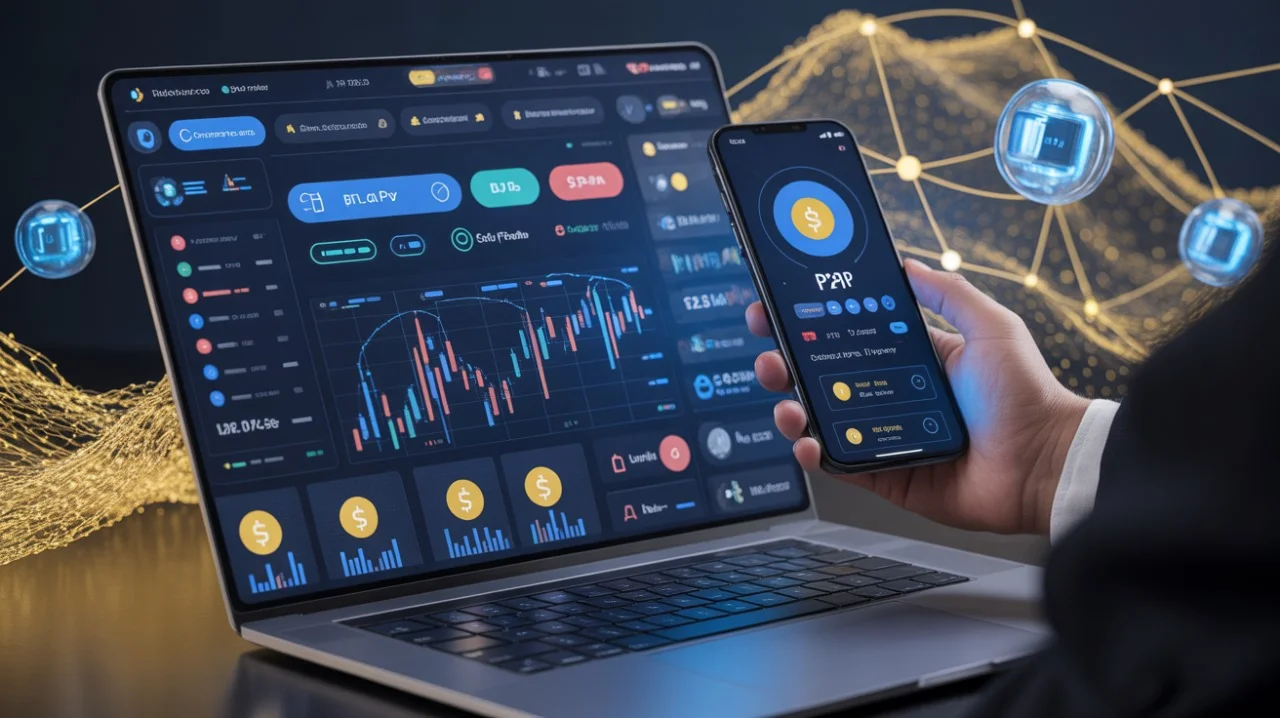The rapid rise of the P2P trading platform has transformed global finance, making it easier for individuals to access markets, send money, and exchange value without intermediaries. Yet, with this freedom comes a responsibility: users must understand how to navigate these platforms effectively. Mastery does not mean becoming a professional trader overnight, but it does require knowledge of the tools, risks, and best practices that make peer-to-peer systems safe and efficient.
Understanding the Core Mechanisms
At the heart of every P2P trading platform are a few essential tools: escrow, reputation systems, and direct negotiation. Escrow holds funds safely until both parties fulfil their side of the trade, ensuring that neither buyer nor seller is left vulnerable. Reputation systems allow traders to build credibility over time, giving newcomers the chance to identify trustworthy partners. Direct negotiation gives users freedom to set prices and choose payment methods. To master the platform, users must understand how these mechanisms work together to create trust in a decentralised environment.
Security as a Priority
No level of expertise can substitute for vigilance. Mastering a P2P trading platform requires strict security habits. This means never sharing private keys or seed phrases, enabling two-factor authentication, and using hardware wallets for larger amounts. Users should also learn to spot phishing attempts, fake websites, and unrealistic offers. Security tools provided by platforms — from AI-driven monitoring to verified user badges — are valuable, but ultimately, the individual must take responsibility for safeguarding their assets.
Choosing the Right Partners
Peer-to-peer trading is built on human interaction. Selecting partners carefully is one of the most important skills for any trader. On a P2P trading platform, reputation scores, transaction history, and community feedback help separate reliable partners from risky ones. Beginners should prioritise highly rated traders, while experienced users may develop networks of trusted contacts for faster and more efficient deals. Over time, building relationships within the community becomes a key factor in successful trading.
Mastering Payment Methods
Different regions rely on different payment systems, from mobile money and QR codes to bank transfers and cash settlements. A P2P trading platform thrives on this diversity, allowing traders to choose methods that best suit their circumstances. To master the system, users must learn how payment methods interact with local regulations, fees, and availability. Understanding these nuances not only reduces risk but also opens opportunities to find the most cost-effective and convenient options.
Learning to Manage Risk
Even with all safeguards, risk is never fully eliminated. Prices fluctuate, disputes arise, and dishonest actors attempt to exploit newcomers. Mastery involves recognising these risks and preparing for them. On a P2P trading platform, this could mean using stablecoins to reduce exposure to volatility, setting transaction limits to minimise losses, and diversifying trading partners to avoid dependence on a single counterparty. Risk management turns uncertainty into strategy, ensuring that traders remain in control of outcomes.
Community Knowledge as a Resource
Peer-to-peer trading is not only about individual skill; it is also about community. Forums, tutorials, and user groups provide valuable knowledge that accelerates learning. Engaging with these communities helps users stay updated on new scams, technical updates, and evolving market trends. A P2P trading platform is more than software — it is a living ecosystem where knowledge flows from experienced traders to newcomers, making the entire network stronger and safer.
Adapting to Growth and Change
Platforms are constantly evolving. New features such as decentralised identity verification, AI-powered recommendations, and cross-platform liquidity networks are reshaping the user experience. To master a P2P platform, traders must remain adaptable, embracing innovation while maintaining caution. Flexibility ensures that users are not left behind as technology and regulations advance.
Mastering peer-to-peer trading is not about eliminating all risk but about learning how to navigate it effectively. By understanding the platform’s core mechanisms, prioritising security, choosing reliable partners, and engaging with the community, users can unlock the full potential of decentralised finance. The P2P trading platform is a tool of empowerment, but only for those who take the time to learn its rules, respect its risks, and embrace its opportunities.





